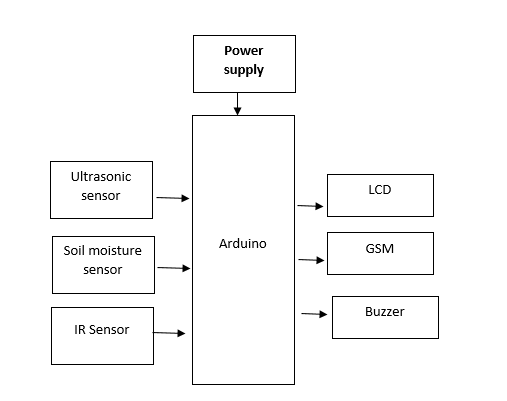Edge Computing-based Intelligent Manhole Cover Management System For Smart Cities
Abstract
This project proposes an edge computing-based intelligent manhole cover management system designed for smart city infrastructure, aiming to enhance public safety and maintenance efficiency. The system utilizes an Arduino as the central controller and integrates multiple sensors, including a gas sensor to detect the presence of hazardous gases, an ultrasonic sensor to monitor water levels inside the manhole, and an IR sensor to detect the status of the manhole lid (open or closed). These sensors enable real-time, on-site monitoring of potential dangers such as gas leaks, flooding, or unauthorized access. When any abnormal condition is detected—such as high gas concentration, rising water level, or an open lid—the system activates a buzzer for immediate local alert and sends a warning message via GSM to maintenance authorities. All sensor readings and alerts are also displayed on an LCD screen for local visibility. This intelligent system leverages edge computing for faster decision-making and provides a reliable, automated solution to improve urban safety and infrastructure management.
NOTE: Without the concern of our team, please don't submit to the college. This Abstract varies based on student requirements.
Block Diagram

Specifications
Hardware requirements:
- Arduino
- LCD
- IR Sensor
- Soil moisture sensor
- Ultrasonic sensor
- Buzzer
- GSM
- Power supply
Software requirements:
- Arduino IDE
- Embedded C
Learning Outcomes
- Arduino Pin diagram and Architecture
- How to install Arduino IDE Software
- Setting up and Installation procedures for Arduino IDE
- Introduction to Arduino IDE
- Commands in Embedded C
- How to install Libraries?
- Basic coding in Embedded C
- Working of Ultrasonic sensor
- Working of IR Sensor
- How to interface Soil moisture Sensor with Arduino
- Working of Gsm
- Working of LCD
- How to interface LCD with Arduino?
- About Project Development Life Cycle:
- Planning and Requirement Gathering (software’s, Tools, Hardware components, etc.,)
- Schematic preparation
- Code development and debugging
- Hardware development and debugging
- Development of the Project and Output testing
- Practical exposure to:
- Hardware and software tools.
- Solution providing for real time problems.
- Working with team/ individual.
- Work on Creative ideas.
- Project development Skills
- Problem analyzing skills
- Problem solving skills
- Creativity and imaginary skills
- Programming skills
- Deployment
- Testing skills
- Debugging skills
- Project presentation skills
- Thesis writing skills





 Paper Publishing
Paper Publishing
